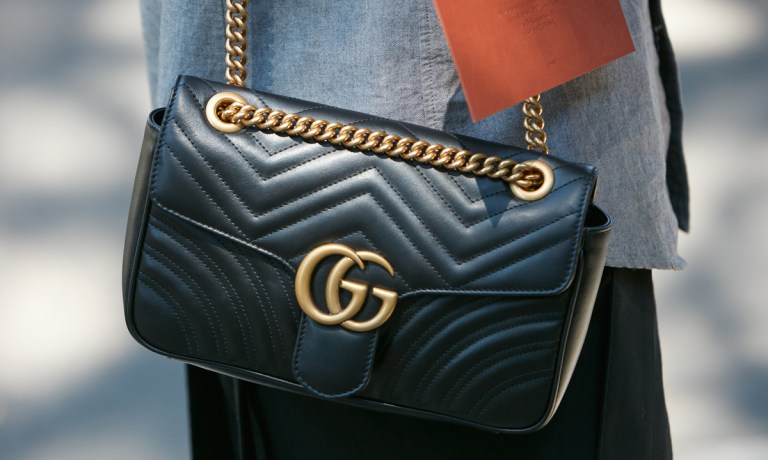
As Richemont acknowledges the declining influence of China on luxury shopping, Kering is seeking to delve deeper into the market, aiming to connect with consumers who remain eager to spend.
The company has introduced Gucci’s newly opened flagship store, now accessible on China’s JD.com. This addition places Gucci among a selection of high-end brands also present on JD.com, including Louis Vuitton, Tiffany, Alexander McQueen, and Max Mara. The Italian brand is said to be providing expedited same-day delivery in select key urban centers.
Moreover, this latest store introduction builds upon the preexisting representation of Kering’s flagship brand on Tmall. The debut on Tmall occurred in 2020, aligning with the emergence of the pandemic, a time marked online commerce adoption by many luxury brands.
In July, PYMNTS highlighted the fluctuations in China’s spending trends. For instance, Estée Lauder maintained its positive outlook on the Chinese market, but the company revised its sales projection due to a slower-than-expected recovery in Asia.
CEO Fabrizio Freda said that the recovery in Asia’s travel retail sector is proving more erratic and gradual than initially projected.
Read more: Estée Lauder Lowers Outlook but Continues to Bet Big on Chinese Market
Kering was another example. For the quarter ending on Dec 31, the group reported a 7% YoY drop in sales, with Gucci, contributing half of its revenue, falling 14%.
Kering attributed the slowdown, particularly for Gucci, to COVID-related restrictions in China during that period. Despite this, Kering’s full-year 2022 revenue rose 9%.
Read more: Kering Says China’s COVID Restrictions Slowed Luxury Sales
Although the prevailing notion is that Chinese consumers are cutting back on spending, this doesn’t apply universally. In fact, China stands as the globe’s largest eCommerce arena, poised to hit $3.3 trillion by 2025.
JD.com’s customer base exceeds 580 million active individuals (though the frequency of their engagement wasn’t specified, daily or monthly), positioning Gucci for high brand visibility.
Kering’s willingness to invest in the Chinese market, despite the reduced spending by Chinese consumers, underscores its long-term vision to cultivate brand loyalty and customer engagement over time.
Meanwhile the rivalry among contenders for Chinese online consumers has intensified. Pinduoduo and Douyin, in particular, have been steadily gaining a greater slice of the market.
The move also signifies a departure from the former dominance maintained by JD.com and Alibaba. Originally centered on discounted products, Pinduoduo has broadened its scope to encompass consumers who are willing to make full-price purchases. And companies are incorporating Douyin as an additional avenue to generate revenue. This despite the dwindling Chinese consumer confidence, as the nation’s recovery from the post-COVID economic challenges is turning out to be more prolonged than anticipated.
According to JD.com Vice President Kevin Jiang, JD.com maintains a lower-than-industry-average return rate of 15% for fashion and luxury retailers, as reported by BoF. This stands in sharp contrast to the return rates of competitors, which can climb as high as one-third, as pointed out by Jiang. Jiang noted that the return rate for cosmetics and jewelry on JD.com is even lower.
With the Qixi festival approaching on Aug. 22, a day akin to Valentine’s Day, Jiang indicated that JD.com plans to launch an exclusive collection. The collection will feature floral motifs.
“Gifting is actually becoming one of the key characteristics which actually sets JD apart from our competitors,” Jiang said.
Jiang also noted that the combination of product authenticity assurance and an edge in end-to-end logistics (unlike Tmall, which outsources some of its delivery operations to third parties) has proven successful for its user base, which still tilts towards men. On JD.com, 55% of customers are male.
“You don’t want to send your girlfriend a fake Gucci bag … and you need to ensure you know the package was delivered on time, not after this special date,” Jiang continued.
JD.com is partnering with brands to design highly customized retail experiences. Gucci, for one, will provide customers with the choice to buy flowers along with its products, and these items will be shipped together rather than in separate parcels — an effort that will be supported by JD.com’s premium white-glove delivery service.